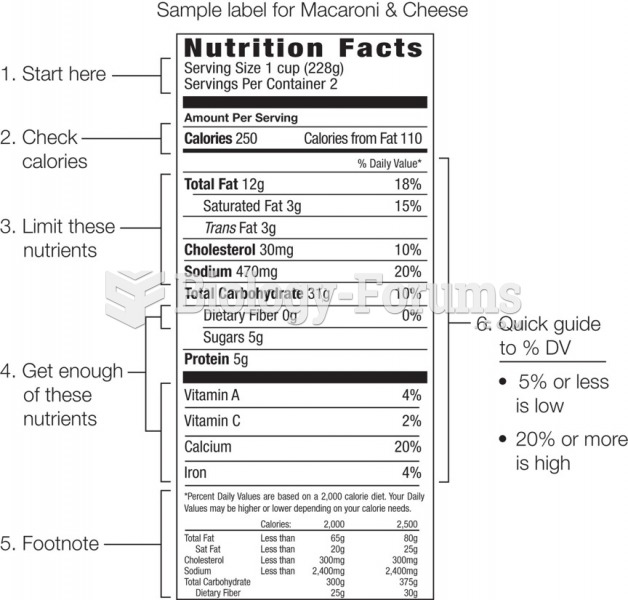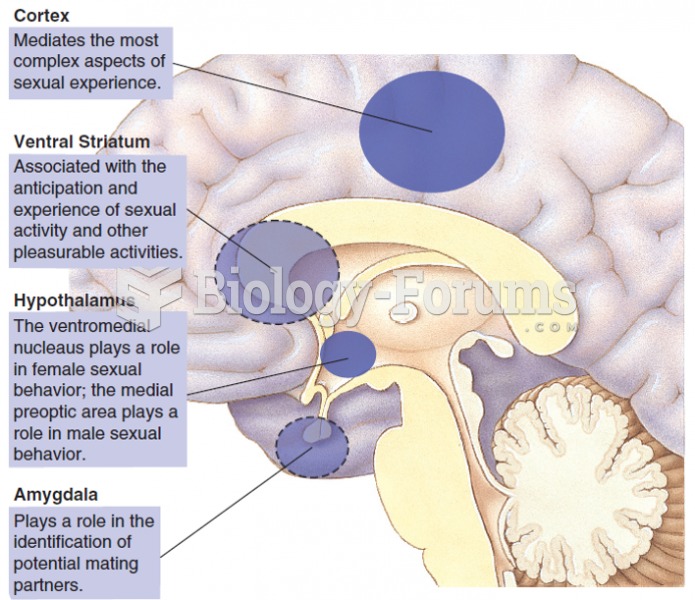|
|
|
Asthma cases in Americans are about 75% higher today than they were in 1980.
Patients who cannot swallow may receive nutrition via a parenteral route—usually, a catheter is inserted through the chest into a large vein going into the heart.
The tallest man ever known was Robert Wadlow, an American, who reached the height of 8 feet 11 inches. He died at age 26 years from an infection caused by the immense weight of his body (491 pounds) and the stress on his leg bones and muscles.
It is believed that humans initially contracted crabs from gorillas about 3 million years ago from either sleeping in gorilla nests or eating the apes.
According to animal studies, the typical American diet is damaging to the liver and may result in allergies, low energy, digestive problems, and a lack of ability to detoxify harmful substances.
 The footnote on a Nutrition Facts label explains the Recommended Daily Values that are the basis of ...
The footnote on a Nutrition Facts label explains the Recommended Daily Values that are the basis of ...
 In Hindu marriages, the roles of husband and wife are firmly established. Neither this woman, whom I ...
In Hindu marriages, the roles of husband and wife are firmly established. Neither this woman, whom I ...





